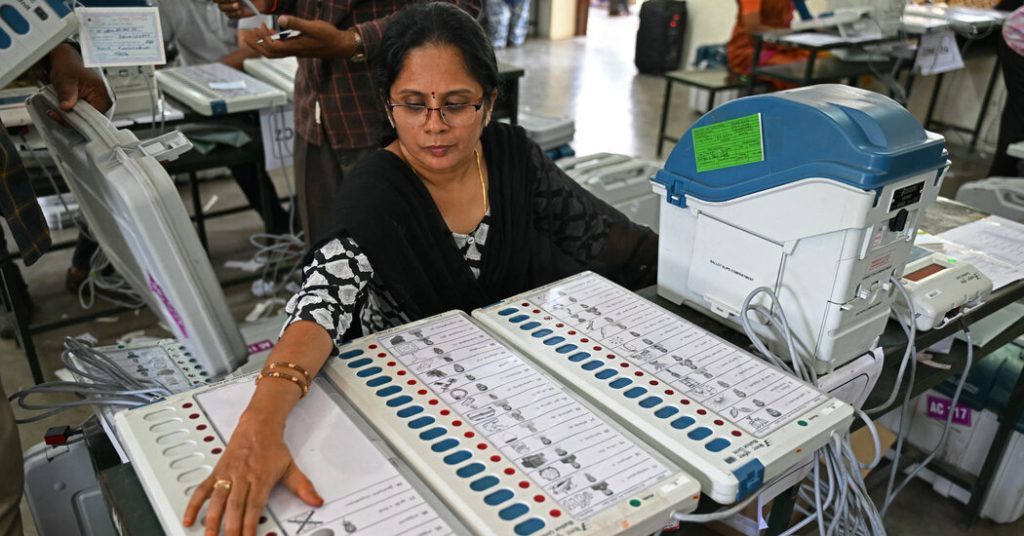India is currently in the midst of a colossal democratic process as voters head to the polls to decide whether Prime Minister Narendra Modi will remain in office for a third term. With 969 million eligible voters, India is the world’s most populous nation, making the election process complex and time-consuming. This is further complicated by India’s geography, election rules, security measures, holidays, and the use of electronic voting machines.
The sheer scale of India’s population and geographic diversity play a significant role in the length of the electoral process. With a land area of over a million square miles, election workers must travel vast distances to set up polling stations to ensure voters don’t have to travel more than 2 kilometers from their homes. This can involve travel by foot, bicycle, helicopter, boat, or even horse, camel, or elephant, with some journeys lasting days.
India’s history of election violence and disorder led to the deployment of national paramilitary forces in the 1990s to ensure order and security during the electoral process. Over 300,000 security forces are currently deployed to transport voting machines and maintain peace at voting booths. The use of multiple stages in the election process allows soldiers to shift from one region to another, preventing violent outbreaks and ensuring voter safety.
The Election Commission of India meticulously plans election dates to avoid conflicts with public holidays, religious festivals, harvest season, academic schedules, exam timetables, and weather considerations. This strategic planning has contributed to high voter turnout rates, with 67 percent of eligible voters participating in the 2019 national election. However, this careful scheduling has also led to criticisms that the election process takes too long, allowing for the spread of rumors and disinformation.
The introduction of electronic voting machines in 2004 revolutionized the voting process in India, making it simpler and more efficient. These machines have become standard in all national elections, aiding millions of voters, particularly in crowded cities where polling stations can serve thousands of people. The machines consist of a control unit, balloting units, and a printer, all housed in portable carrying cases. Once the voting is complete, counting is expedited, thanks to these machines, making the process faster and more accurate.
Overall, India’s electoral process is a massive undertaking due to its vast population, diverse geography, stringent security measures, and use of electronic voting machines. While the length of the process may seem daunting, it is essential for ensuring the integrity and fairness of the election. Despite challenges and criticisms, such as the extended duration and potential for misinformation, India’s commitment to democracy is evident in its efforts to conduct free and fair elections for its citizens.


